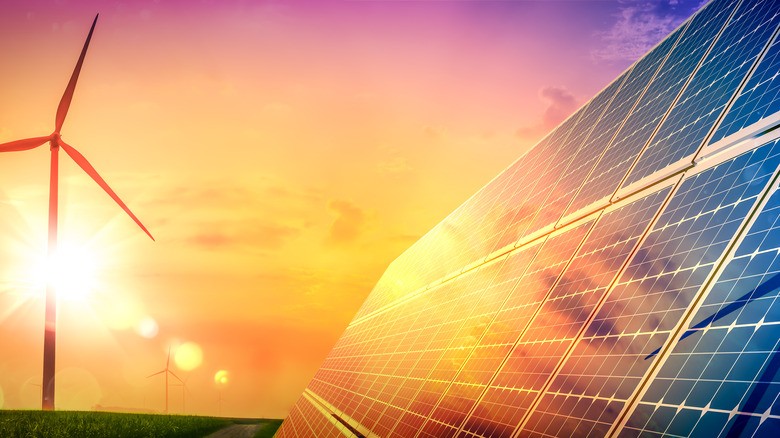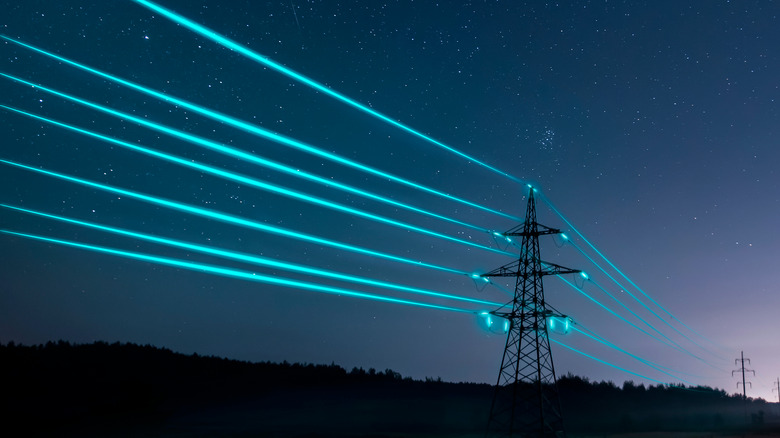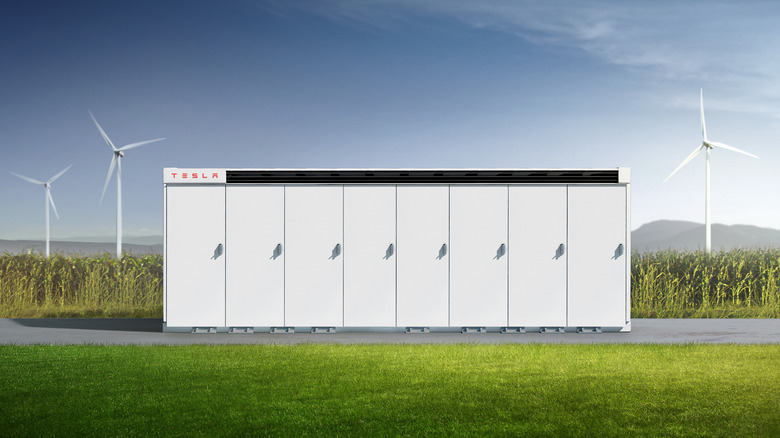The Big Myth About Renewable Energy You Need To Stop Believing
The world is racing toward a zero-carbon energy future, with countries setting ambitious targets that increase green energy projects under the United Nations Sustainable Development Goals (via UN). An independent energy think-tank working to move the world from coal to clean energy, Ember, revealed that wind and solar reached an all-time high for global electricity generation in 2021. Renewable energy for the year accounted for 38% of the total global supply, and wind and solar were reported to be the fastest-growing sectors.
Green energy has always found resistance. Initially, the fossil and carbon fuel interests blocked its progress, and climate change science was put to the test by skeptics and misinformation. By 2022, the consequences of climate change, and the benefits of clean energy, have been well established. Governments and companies have embraced new energy technologies, viewing them as emerging markets that can provide better services and help save the world from climate disasters. However, clean energy skepticism and myths still proliferate.
One of the biggest myths about solar and wind energy, which needs urgent rectification, has somewhat turned into a negative mantra. The myth alleges that "when the sun does not shine and the wind does not blow, solar and wind energy are not generated," Yale Environment 360 explains.
Debunking the energy myth
All electricity systems, whether used domestically by businesses or by industries, are composed of two main elements: the energy generation system, and the energy storage and distribution network. As Yale Environment 360 explains, no energy plant works 24/7, around the clock, year-round. Disruptions and downtime are very common in the energy generation sector, impacting nuclear, coal, gas, wind, solar, hydroelectric, and even ocean energy.
When it comes to wind and solar, these idle times are set by weather; just like with hydroelectric dams, power generation drops in times of drought. Coal plants may also face reductions due to problems in the supply chain, and nuclear plants may have to shut down due to maintenance or emergencies. Fossil fuel and nuclear plants, according to Yale, work with disruptions that can affect up to 12% of their total operating time.
The myth that solar and wind energy are only useful on sunny and windy days, while it does have a foundation, reveals just how little is known about how energy systems work. Solar and wind projects, like all energy generation projects, are linked to energy storage and distribution systems. During outages or on days when the sun does not shine and the wind does not blow, storage systems kick in.
The key to a global clean energy future is energy storage
The most used energy storage system in the world (via Science Direct) is hydro-pump energy storage. The U.S. Department of Energy explains that these systems have been operating in the country since 1930. Pumped Storage Hydropower systems totaled 95% of all energy storage in the U.S. in 2020, the U.S. Hydropower Market Report from the Department of Energy reveals. When demand for energy is low, these systems use surplus energy to pump water into a reservoir at elevated heights. When demand for energy is high, the water is released to generate energy through hydroelectric systems.
But Earth.org explains that hydroelectric projects have a main disadvantage: they alter and damage the environment. Mega dams flood vasts areas, affect watersheds and wildlife, sometimes seize land from locals communities, and cause social unrest. Companies like Tesla, aware of the global energy challenges, are innovating to propose solutions. Tesla's Powerwall, designed for domestic users, stores energy produced by solar panels. For bigger industrial customers, Tesla offers the Megapack, a battery solution that can be scaled to a customer's need. The drawbacks of battery storage systems are expensive prices, risk of chemical fires, battery degradation, and use of problematic materials like lithium.
Energy Vault, an energy storage company, is convinced that gravity can solve the global energy storage problem. The company builds energy centers that store electricity using gravity. When demand is low, the energy surplus raises heavy blocks, and when demand is high, the blocks come down and the force of gravity is converted back into electricity. They say their blocks are cheaper than batteries, are highly efficient, chemical-fire safe, do not degrade, and are made from locally sourced materials. Innovating in energy storage is as key for the future, as scaling renewable energy generations projects. When the sun does not shine, and the wind does not blow, energy storage systems power the world as it moves into clean energy.


